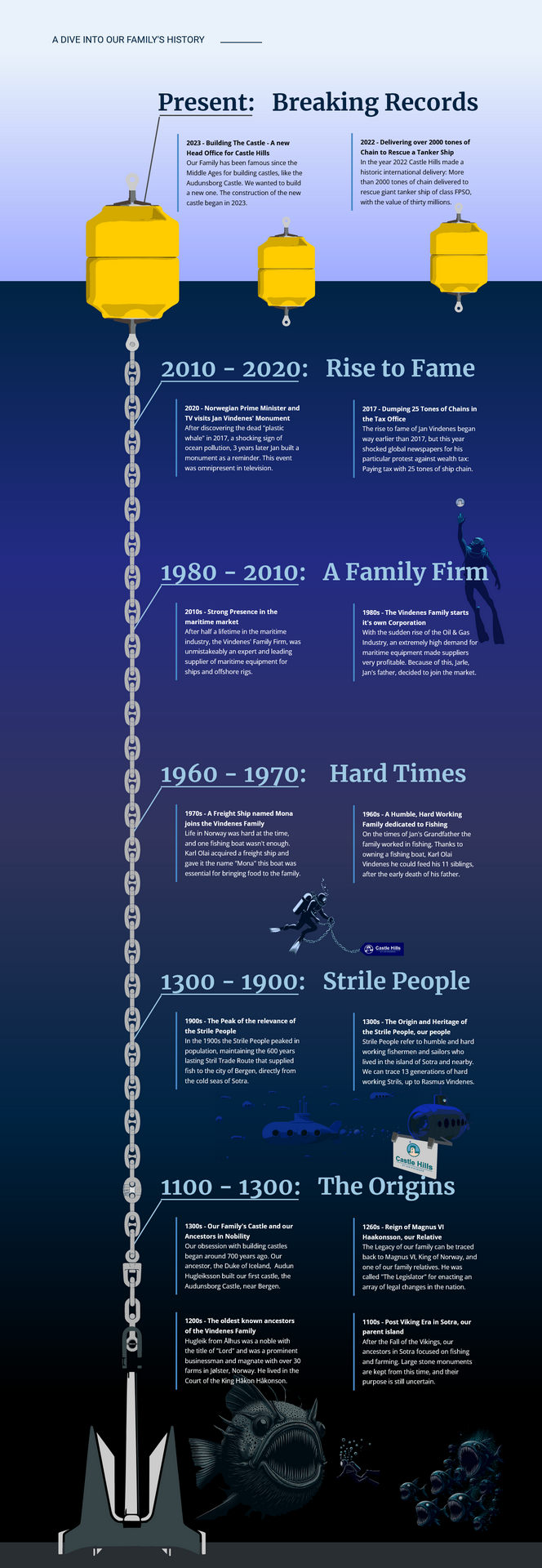Castle Hills is the newest company of the legendary Jan Vindenes "Kjetting Jan" who is building a 30+ years legacy in industry. After growing independent from the family firm, Castle Hills was born.
1900s - The Peak of the relevance of the Strile People
In the 1900s the Strile People peaked in population, maintaining the 600 years lasting Stril Trade Route that supplied fish to the city of Bergen, directly from the cold seas of Sotra.
1300s - The Origin and Heritage of the Strile People, our people
Strile People refer to humble and hard working fishermen and sailors who lived in the island of Sotra and nearby. We can trace 13 generations of hard working Strils, up to Rasmus Vindenes.
1970s - A Freight Ship named Mona joins the Vindenes Family
Life in Norway was hard at the time, and one fishing boat wasn't enough. Karl Olai acquired a freight ship and gave it the name "Mona" this boat was essential for bringing food to the family.
1960s - A Humble, Hard Working Family dedicated to Fishing
On the times of Jan's Grandfather the family worked in fishing. Thanks to owning a fishing boat, Karl Olai Vindenes he could feed his 11 siblings, after the early death of his father.
1300s - Our Family's Castle and our Ancestors in Nobility
Our obsession with building castles began around 700 years ago. Our ancestor, the Duke of Iceland, Audun Hugleiksson built our first castle, the Audunsborg Castle, near Bergen.
1260s - Reign of Magnus VI Haakonsson, our Relative
The Legacy of our family can be traced back to Magnus VI, King of Norway, and one of our family relatives. He was called "The Legislator" for enacting an array of legal changes in the nation.
1200s - The oldest known ancestors of the Vindenes Family
Hugleik from Ålhus was a noble with the title of "Lord" and was a prominent businessman and magnate with over 30 farms in Jølster, Norway. He lived in the Court of the King Håkon Håkonson.
1100s - Post Viking Era in Sotra, our parent island
After the Fall of the Vikings, our ancestors in Sotra focused on fishing and farming. Large stone monuments are kept from this time, and their purpose is still uncertain.
The Castle. More than 8 offices and common rooms, as well as an events hall and different departments.
3 Large rooms for storaging maritime equipment, tools and machinery for daily operations, and for repair.
Large outdoor space for deliveries.
